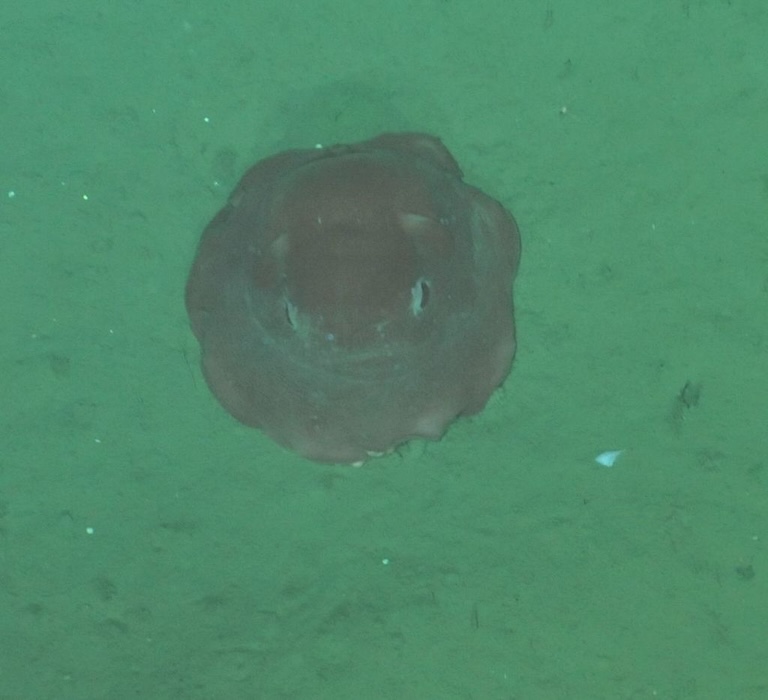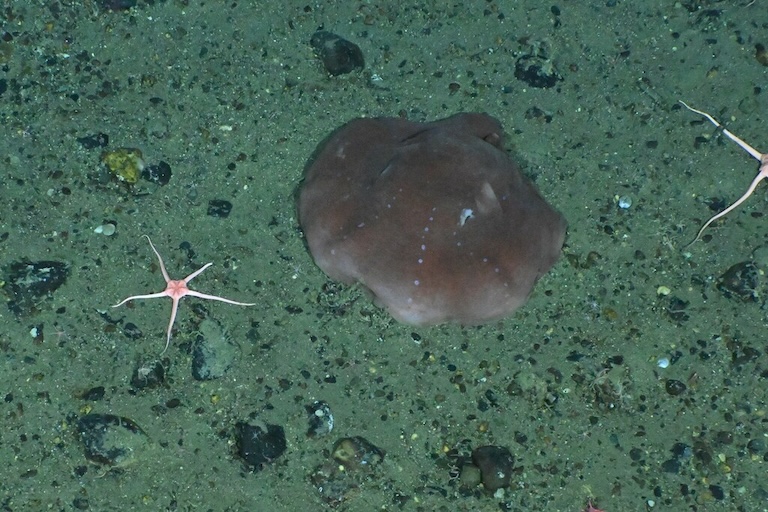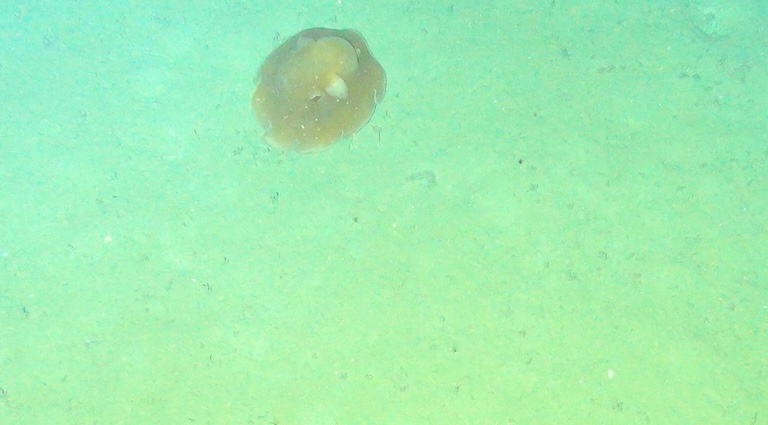Flapjack Octopus Profile
Move over, Cookie Monster, there’s a new food-demon combo ready to educate children on self-control.
The recently discovered “flapjack devilfish” is not a fish at all, but an octopus, which still only half explains why it’s also known as the flapjack octopus.
The origin of the other half isn’t as obvious, but it’s thought to reference what a flapjack could look like if it was octopus-shaped, gelatinous and lived in the ocean.

Flapjack Octopus Facts Overview
| Habitat: | Pelagic marine, benthic |
| Location: | Pacific Ocean |
| Lifespan: | Unknown |
| Size: | Mantle length of up to 20 cm (7.9 in) |
| Weight: | Not listed |
| Colour: | Reddish or pinkish |
| Diet: | Crustaceans |
| Predators: | Likely sharks |
| Top Speed: | Unknown |
| No. of Species: | 1 |
| Conservation Status: | Data Deficient |
Flapjack octopuses are a member of the “other” suborder of octopuses, and perhaps a remnant of a primitive line of deep-sea cephalopods that we still don’t know all that much about.
This one in particular is quite a recent discovery and its ecological role and population data aren’t yet known.
It’s thought to be a shallower-water species, which would explain why it comes up more often in fishing nets than its known relatives.
There have been some inferences around its breeding and life cycle based on physiological characteristics, but very little in the way of behavioural observations are available yet.
If it is as slow-living as researchers infer, though, it might be in a bit of trouble.
Interesting Flapjack Octopus Facts
1. They’re Cirrates
Octopuses belong to the order Octopoda, and come in two main flavours: you’ve got the Incirrata suborder, which contains your benthic species in the Octopodidae family, containing most known species, and then a bunch of pelagic species too, like the paper nautiluses which aren’t nautiluses at all.
And then, there’s the other suborder, the Cirrina, or “Cirrate” octopuses, so-called because they have hairy suckers, which somehow makes suckers even more creepy.
There are five families of these hairy octopuses, and they differ also in that they have chunks of internalised shell remaining inside them from their ancient past when all cephalopods had external shells.
Flapjack octopuses belong to this suborder.
Another difference is that they have a pair of little flaps on their heads, which are ear-like fins, and give them the “devil” part of the nickname many of the species end up with.
Early, early fossils of ancestral octopuses likely had these ear flaps too, so it’s possible this suborder represents a more primitive form than the snazzy new blue-ringed octopuses and their kind.
Another thing that sets this group apart is a web of skin which can be ballooned out as a defence mechanism.

2. They’re umbrella octopuses
Opisthoteuthidae is the family name of the flapjack octopus, and this family is characterised by the distinctive web of skin connecting their arms. However, this isn’t the intermediate web found in other cirrate octopuses, but a workaround in the form of a spoked webbing between its arms, giving it the umbrella appearance.
Unlike other families in the suborder, their devil fins are not as well developed and are just used to stabilise the animal while it swims.
So, the flapjack octopus is a hairy umbrella and has no resemblance to confectionary whatsoever.
This species is one of around 14 known species in the genus Opisthoteuthis, which are collectively known as flapjack devilfishes, apparently because they’re somewhat squashed flat. 1
3. They’re relatively shallow water Cirrates
Just like flapjacks on land, the flapjack octopuses don’t spend as much time in deep water as many cirrate octopuses do.
Very little is known about this species, but it appears from individuals brought up in nets that they are a relatively shallow-water species, ranging from around 150 metres down to about 850 metres, which is still quite a lot for a flapjack.
Other net-based discoveries are that males and females occupy different ecosystems to a degree, as suggested by the fact that males are brought up more often than females, who may be in the relative safety of the rockier breeding pools, but this is still speculative, as they’ve not been seen breeding or laying eggs yet. 2

4. Males don’t have a hectocotylus
Male Cephalopods as a whole mate using a special arm called a hectocotylus, which is used as an analogue to the penis in some instances (although penetration involves stabbing the female in the head with it – not a recommended reproductive approach for readers), or as an appendage for handing the female a sperm packet (or just sort of sticking one to her head – again, not typically effective in mammals) in others. In some other cases, it’s even used as a single-use harpoon that rips off in the act.
But flapjack octopuses don’t have any of this, and nobody’s quite sure how they mate. One clue is a set of enlarged suckers present only in the male, but since they’ve never been witnessed in the act, this is still only an educated guess.
5. They reproduce continuously
Much in the way that mice leave little trails of pee everywhere instead of saving it up to unload on the wall of an underpass like we higher mammals, the flapjack octopus is thought to reproduce almost continuously, rather than in a single clutch at the end of her life.
Throughout her reproductive years, the female will lay one or two eggs at a time, which is in contrast to more commonly known octopuses, who lay all theirs at once and then promptly drop dead.
It’s thought that eggs will be dotted about in the ocean like the wandering offspring of a TK Maxx shopper – the parents nowhere to be found.
Again, this is inferred, by the discovery of single or pairs of eggs from this species found in the oviduct at a time, despite having the potential to lay thousands.
Hatchlings emerge a lot further along in their growth than that of the incirrate suborder of octopuses, skipping their larval stage. 3
6. They might live a long time
The majority of known octopuses tend to have a lifespan akin to a flapjack on a ten-year-old’s plate. Ironically, the flapjack octopus might live a lot longer than this.
One of nature’s cruellest tricks was to create an animal with such a curious and exceptional mind but give it a kill switch timer of just over a year as if to protect the world from total octopus domination.
But this pink, squishy animal is thought to live more slowly, just ambling around on the sea bed, popping out eggs here and there.
Still, this comes from quite an educated guess: estimated lifetime fecundity, or number of eggs is around 1,500 for this species, and when investigating dead ones caught in nets, they only seem to have one or two eggs in their oviduct at once, leading people to conclude that they must live a long time to produce them all.
But that appears to be all we’re going on at the moment, and this octopus remains a bit of a mystery to science.

7. This could be a problem
Setting aside the problems of a lack of data, slow-living animals tend to breed more slowly, too, and this means they take longer to recover from damage to their populations than other, faster-breeding species might.
Stats on their fishing mortality remain unclear, but being the most shallow-living genus of the cirrate octopuses, and being – as researchers believe – so slow to mature and breed, they may be in more danger than it’s possible to calculate.
There are suggestions from as far back as 2006 that fishing has already put a dent in their populations, but no solid figures are available yet, like most species, they are certainly no match for trawler nets.
Flapjack Octopus Fact-File Summary
Scientific Classification
| Kingdom: | Animalia |
| Phylum: | Mollusca |
| Class: | Cephalopoda |
| Order: | Octopoda |
| Family: | Opisthotuthidae |
| Genus: | Opisthoteuthis |
| Species: | californiana |
Fact Sources & References
- Villanueva, R. (2000), “Observations on the behaviour of the cirrate octopod Opisthoteuthis grimaldii (Cephalopoda)”, Sci Hub.
- Walter T.(1961), “New Records and Observations on the Flapjack Devilfish, Opisthoteuthis californiana Berry”, University of Hawai’i Press.
- “Opisthoteuthis californiana”, IUCN Red List.
